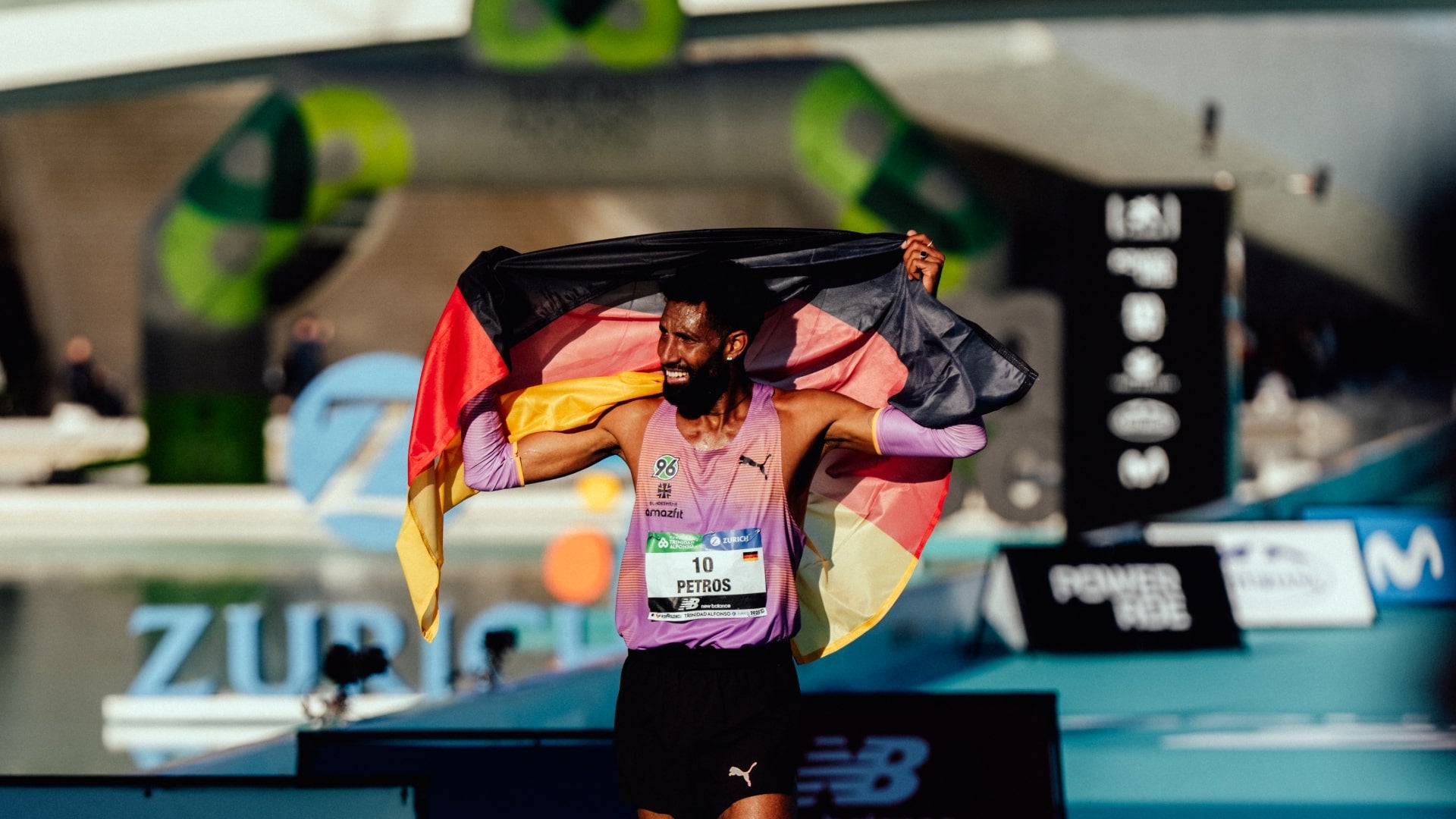
Cross Country: Running beyond the limits
Cross Country is more than just a race over fields and hills - it is a tradition that combines endurance, tactics, duels and team spirit. A running format with a lot of potential, but unfortunately too little attention. Why is that?
Words: Sven Rudolph
Photos: Florian Kurrasch

The wild, adventurous sister of running
Instead of running in circles on perfectly paved roads or on measured tracks, cross-country running takes place across meadows, through forests and over hills. This variety is what makes cross country so attractive. Even if some runners see cross-country running as torture, many also see it as a training tool. It helps you become stronger, faster and fitter. It's not without reason that many of the best middle and long-distance runners have a cross-country background.
Compact, unpredictable, and varied
A typical cross-country course is four to twelve kilometers long. The World Athletics (International Athletics Federation, formerly IAAF) recommends a lap length of between 1,750 and 2,000 meters for international competitions. This means that spectators can easily follow the racing action without having to move around much. The races usually take place in winter and autumn, so rain, snow and slippery surfaces are not uncommon. These circumstances make the courses even more demanding, adding to the unpredictability and excitement of the races.

Due to the varying difficulty of the routes, there are no world records and comparisons of results are difficult. Instead of chasing times and chasing records, the focus in cross country is not on individual best times, but on team rankings. This type of race promotes teamwork and cohesion as the performance of each individual runner influences the overall team performance. When scoring, the team members' rankings (e.g. one point for first place, two points for second) are added together, and the team with the lowest total score wins.
The roots of cross country
The sport originally emerged in England in the 19th century. The format quickly spread beyond Europe and gained international recognition. The discipline was first introduced for men at the 1912 Summer Olympics in Stockholm, Sweden. Cross-country running was also part of the program in 1920, 1924 and 1928 before it was removed from the Olympics.
The IAAF has hosted the World Cross Country Championships every year since 1973. In 1981, an African nation (Ethiopia) won the men's event for the first time, and ten years later Kenya also won the women's event.

Probably the most famous and successful cross country runner of all time is Kenenisa Bekele from Ethiopia, who won a total of 16 gold medals at the IAAF World Cross Country Championships, 12 of which were individual and four with the team.
Since European runners had fewer and fewer chances against the strong runners from East Africa, the SPAR European Cross Country Championships were introduced in 1994 and have taken place annually since then.
Terrain, tactics and team dynamics
Marathons and half marathons are very popular, but they are also monotonous: you set a pace and try to maintain it for as long as possible. In a cross-country race, there are constant decisions to be made: Where is the best place to put my foot? When should I step on the gas or hold back? A successful cross-country runner once put it this way: “To be successful, you have to unleash the beast within!”


“To be successful, you must unleash the beast within! ”
Due to the different track conditions in cross-country, there is no simple strategy that relies on a consistent pace from start to finish. Coaches and runners debate whether a fast start or a steady pace is better. Some prefer to run in a group, others prefer to run their own race. Your individual abilities, endurance and distance therefore have a strong influence on whether you run in the peloton and later pull away or whether you run behind and catch up at the end.
There is also another important aspect that influences the race dynamics and the effort of each individual: the team ranking. Because cross country is a team sport where you don't run for yourself, but for the team. That's why placement is more important than time and because every place counts, you always see runners in races who push themselves to their limits and sometimes even beyond them.
Olympics again soon?
We won't see any runners running through terrain in Paris yet. World Athletics' proposal to hold the discipline in a new format, as a mixed relay race, did not make it into the program for the 2024 Olympic Games in Paris. In this event, two men and two women from each nation should run 2.5 kilometers twice.

A format that has many requirements for exciting races. After all, the President of the World Athletics Federation, Seb Coe, is a big fan of cross-country running. He sees the sport more as a discipline for the Olympic Games in winter.
But maybe it will also work at the 2028 Summer Games in Los Angeles. This would be supported by the fact that cross country is very popular and well-known in the USA. In addition, one or two cross-country races have already been held in Los Angeles.










